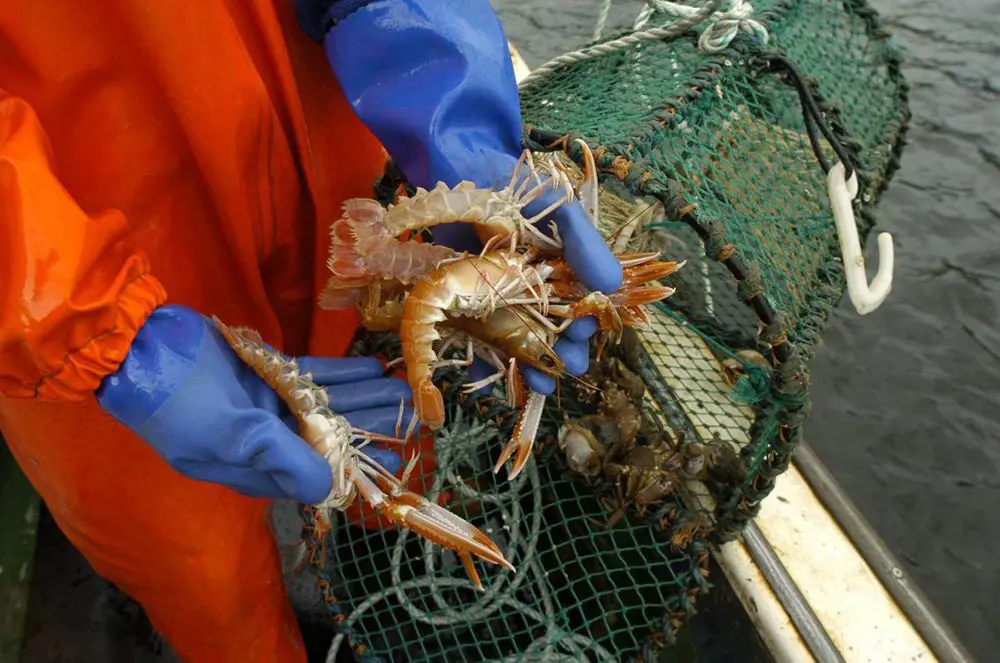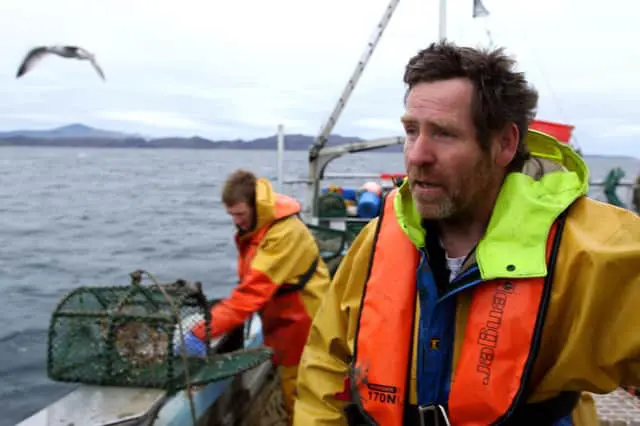Blue Ventures co-founded the Transform Bottom Trawling Coalition in 2021 to develop practical and equitable solutions for a just transition away from industrial bottom trawling across the globe. Bottom trawling is responsible for large volumes of bycatch, damages the seabed, emits vast quantities of carbon, and is often linked to conflict with other fishing sectors. One of the coalition’s founding members is Our Seas, an alliance of Scottish organisations, businesses, communities, and individuals who want to bring back an inshore trawling and dredging limit to the Scottish coast. The Scottish Creel Fishermen’s Federation (SCFF) is a member of Our Seas and we spoke to its National Coordinator, Bally Philp, about his views on bottom trawling.
My name is Bally Philp, I live next to the Isle of Skye in Scotland, and I’m a fisherman who also represents other prawn and creel fishers and divers working in low-impact fisheries.
I come from a family of fishermen, I live on the coast and I am surrounded by coastal communities, so I suppose I was born into fishing to some degree. When I was only knee high, my dad would take me out on the boat, and my earliest fishing memories are of him catching demersal whitefish by trawling. Now, there is no commercial demersal whitefish trawling left in Scotland’s inshore seas, and that industry is gone.
Almost all of our inshore fishing is now based on shellfish, mainly nephrops (also known as langoustine, scampi and prawns) and scallops. Essentially, in the time I’ve been fishing, all of the demersal fish have gone. I believe this is down to large-scale bottom trawling and dredging, which are different types of fishing methods that pull fishing gear along the seabed. A dredge is normally a rigid structure using a beam or a rake and bottom trawling uses a large net. Both methods involve dragging gear along the bottom of the sea, which has a huge impact on a wide range of species, and not just those fished commercially, but the ecosystem itself. Pulling the gear over the seabed changes the seabed habitat and weakens its flora and fauna, because few things can handle heavy gear being dragged over them repeatedly.

As a result, bottom trawling and dredging have reduced the amount and the diversity of species you can find in our ocean. It has made catching some species, such as bottom-living whitefish like cod and haddock, much more difficult, and we can no longer find certain species. My community is now a single species fishery because only langoustines are available in commercially viable quantities. The ecosystem is in almost perpetual decline. My thinking on this is that we’ll never change it until we have removed bottom trawling and dredging from that ecosystem, otherwise it cannot recover.
I worked with trawlers and some scallop dredgers when I was younger. They teach you to be quite hardy when you’re a young man going into fishing, and not just to the weather and the long hours of work, but to what you’re doing. You have to be able to shut your eyes to killing lots of animals. So many of these animals you don’t really need to kill, because you’re not targeting them, you’re not making money off them. They’re killed as a consequence of the job you’re doing. And I find that quite hard. It’s why I didn’t stay in the trawling sector. I prefer the creel sector where I work, which is a very selective way of fishing. Yes, we still kill things, but we kill the things we’re selling to be eaten almost exclusively. Everything else survives. And for me, that’s a far more morally acceptable way to fish.
My father left commercial fishing to set up a prawn processing factory when prawns became the dominant species, and became the principal buyer and seller of nephrops in the northwest coast of Scotland for nearly 20 years. When I wasn’t fishing, I would often work in the processing factory. That factory is now closed because there’s not enough prawn left around the west coast of Scotland. So in the time that I’ve been in the industry I’ve seen it change from herring to whitefish to prawns.
“Where there are profitable and viable alternatives to bottom trawling, these should almost always win. But when it’s opened up to unregulated competition, bottom trawling wins.”
I would like to see better management of bottom trawling and dredging and a viable alternative. I want like decision-makers to protect the ecosystems and fisheries that are most vulnerable to bottom trawling and dredging activity and basically say: ‘This space is reserved for anybody who’s not doing bottom trawling and dredging’. These spaces would probably expand over time as low-impact fisheries developed. I think we do have to be very careful when we try to shift bottom trawling and dredging out of an area, because you can get unintended consequences, such as a concentration of fishing effort in one location or a loss of livelihoods without financial support for a transition to lower-impact methods. But if we do it right, in the longer term you wouldn’t be allowed to bottom trawl anywhere where there is a viable alternative. That way we’re not swapping fishing jobs for conservation. I truly believe we can have conservation and fisheries in the same place if we allow areas for low-impact fisheries that are not bottom trawling. That’s what I think would be the ideal scenario. That’s what I’d argue is the ideal scenario.
“I truly believe we can have conservation and fisheries in the same place if we allow areas for for low-impact fisheries that are not bottom trawling.”

I think there are two things the public can do. They can firstly choose products that aren’t caught by bottom trawling, and secondly tell decision-makers and politicians that they don’t support bottom trawling right up to their shores, displacing low-impact fisheries. I think politicians often don’t so much act on science or facts/logic, they act on votes. So if people tell politicians they won’t vote for them if they don’t promote marine recovery and low impact fisheries, then the politicians will likely act. There are many grassroots movements fighting against heavy industrial fisheries, and the more people supporting these the better. If you want to do something about this, ask about how the fishing in your area is done and start advocating for the kind of fishing you believe should be done.
More information:
- Petition to bring back the inshore trawling and dredging limit to the Scottish coast
- Transform Bottom Trawling
- Our Seas
- Scottish Creel Fishermen’s Federation

